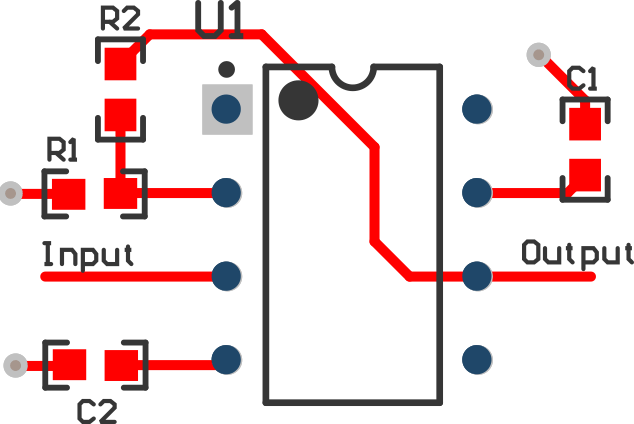SNOSC25D May 1998 – October 2015 LM741
PRODUCTION DATA.
10 Layout
10.1 Layout Guidelines
As with most amplifiers, take care with lead dress, component placement, and supply decoupling in order to ensure stability. For example, resistors from the output to an input should be placed with the body close to the input to minimize pick-up and maximize the frequency of the feedback pole by minimizing the capacitance from the input to ground. As shown in Figure 3, the feedback resistors and the decoupling capacitors are located close to the device to ensure maximum stability and noise performance of the system.
10.2 Layout Example
 Figure 3. LM741 Layout
Figure 3. LM741 Layout